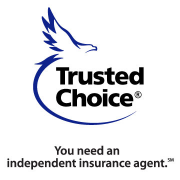Tire Blowout 101: Tips for Before, During, and After
- Jan
- 24
- Posted by Carroll Marshall Insurance
- Posted in Hazard Coverage, Insurance Industry, Winter Haven Auto Insurance
 Tire blowouts are a common cause of accidents on Florida roads, especially during the hottest months when extreme temperatures can heat the pavement to dangerous levels and increase chances of tires failing. Unfortunately, tire blowouts often affect more than just the driver who’s tire has blown, since the sudden shift in the vehicle’s balance can send it into other nearby drivers. While there is no way to 100% prevent blowouts, there are ways to make sure you come out with minimal damage by preparing ahead, knowing how to handle the event itself, and what to do immediately afterwards.
Tire blowouts are a common cause of accidents on Florida roads, especially during the hottest months when extreme temperatures can heat the pavement to dangerous levels and increase chances of tires failing. Unfortunately, tire blowouts often affect more than just the driver who’s tire has blown, since the sudden shift in the vehicle’s balance can send it into other nearby drivers. While there is no way to 100% prevent blowouts, there are ways to make sure you come out with minimal damage by preparing ahead, knowing how to handle the event itself, and what to do immediately afterwards.
Before. Tire blowouts, or any accident for that matter, happen when you least expect them, but that doesn’t mean you can’t take measures to protect yourself and prepare. The first, and most obvious, way to protect yourself from tire blowouts is by investing time in routine inspections of your tires. Check for proper air pressure in each tire, do a thorough check for nails or punctures in the tire, watch for wearing treads, etc. At the first sight of extensive wear, it’s time for new tires. Old tires are the most likely to blow out, and also pose a risk for accidents in wet weather since there is little grip left. If your tires are in good condition and properly maintained, you’re less likely to experience a sudden tire blowout, but you should still be ready just in case. Have caution triangles or flares in your car in the event of an accident, have your spare tire inflated and ready to go at all times, and always be sure to keep your insurance and registration paperwork up to date and easily accessible.
During. In the event that a blowout does happen to you, don’t panic! Instead of slamming on your brakes and increasing the chances of swerving and worsening the situation, grip the wheel tightly, take your foot off the gas, and gradually slow your vehicle using the brake, while attempting to safely steer to the farthest edge of the road. If possible, get your vehicle several feet off the roadway altogether, before bringing it to a stop and parking it. Once you are in a safe space away from traffic and off the road, turn on your emergency flashers.
After. Following a tire blowout, exit your vehicle if safe to do so. Place flares or caution triangles several feet behind your vehicle to make yourself more visible to oncoming traffic, place a white cloth or flag on your antennae or through an open window to let officers know you need help, and then call for assistance using your cell phone, a highway emergency phone, or by walking to a source of help if there is one easily accessible nearby. Never walk in heavy traffic or on busy roads. Once help arrives, you can arrange for towing, change your tire, etc.
Of course, as with any accident, the best protection is having current and sufficient insurance coverage for your vehicle. Insurance often allows for emergency towing, for roadside assistance, and will cover damages accrued in an accident following your tire blowout. Not sure if your coverage is up to par with your needs? That’s where we come in. Carroll Marshall Insurance works with a variety of auto coverage providers, and we can match you with the best policy and rate based on your needs and your budget. Give us a call or stop by our downtown Winter Haven office!
Since 1952
Carroll Marshall Insurance in Winter Haven, Florida is your hometown insurance agency. Call us today! (863) 293-1111
Our office in downtown Winter Haven is open Monday - Friday 8 a.m.- 5 p.m.
View Larger Map




